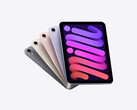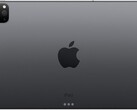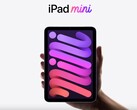Arguably, the iPad mini 6 is the most exciting addition in the series so far. Not only does it have significantly slimmer bezels than previous models, but it also comes with a current-generation SoC. By contrast, the iPad mini 4 and iPad mini 5 featured year-old chipsets with the A8 and A12 Bionic. However, Apple has come in for some criticism over the display with which it has equipped the latest iPad mini.
As many other outlets have covered, some people have been noticing 'jelly scrolling' when using the iPad mini 6. In short, jelly scrolling describes the effect of one half of a display refreshing slower than the other, creating a jelly-like movement when scrolling through web pages. According to Apple, this is not a defect and is normal behaviour for an IPS display, especially a 60 Hz one.
iFixit agrees, but it pulls up Apple in two areas. On the one hand, it notes that Apple has positioned the display's controller board vertically, the same way that people tend to hold a small tablet or a smartphone. iFixitasserts that displays refresh parallel to the position of their controller boards, horizontally in the case of the iPad mini 6. Hence, the iPad mini 6 refreshes its display in the opposite way in which most people use it, giving the effect of text and images wobbling as you scroll through them.
In comparison, the iPad Air 4 has a horizontally-mounted display controller board. As the video below shows, the iPad Air 4 only exhibits jelly scrolling when being used in landscape mode. Incidentally, the iPad Pro's 120 Hz refresh rate does a better job at hiding the jelly scroll effect simply because it refreshes 2x per second than the iPad Air 4 and the iPad mini 6.
On the other hand, iFixit suspects that Apple has sourced cheaper displays for the iPad mini 6 than with the iPad Air 4. Supposedly, this decision may amplify jelly scrolling. At any rate, the effect is not unique to the iPad mini 6.
iFixit also awards the iPad mini 6 a 3/10 for repairability. The website demonstrates that you must remove the display to access the internals, which Apple has secured with plenty of adhesive. Similarly, Apple has glued the battery and speakers down, too. The USB Type-C port is simple to remove, but it will take a while to access it if it ever needs replacing.















